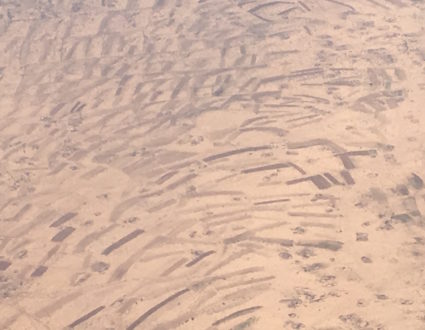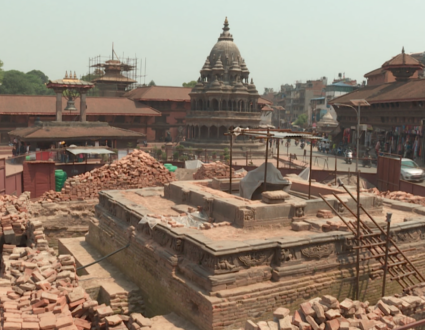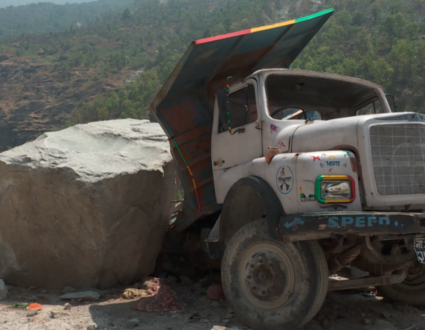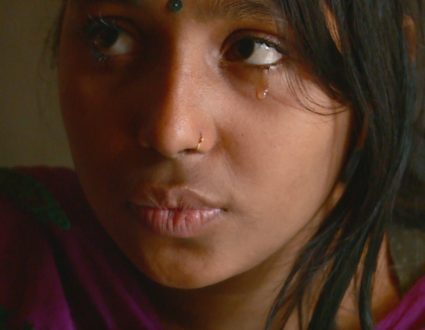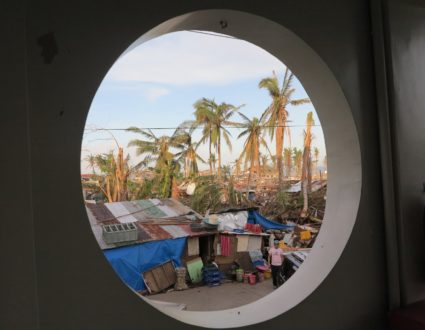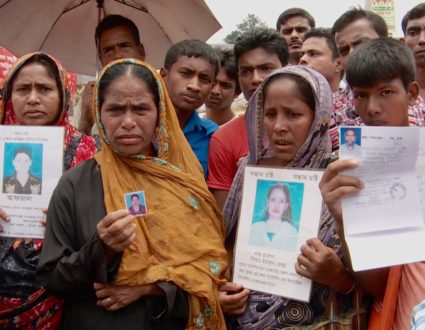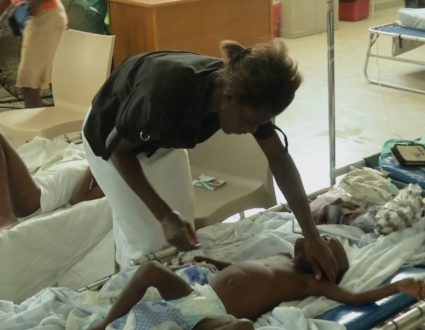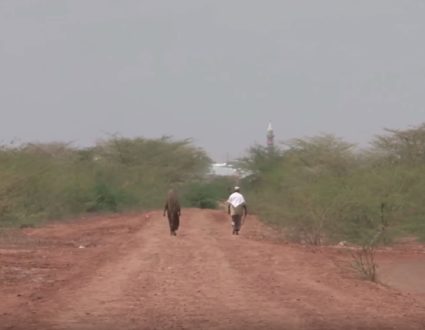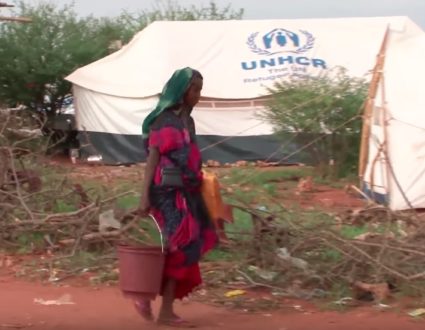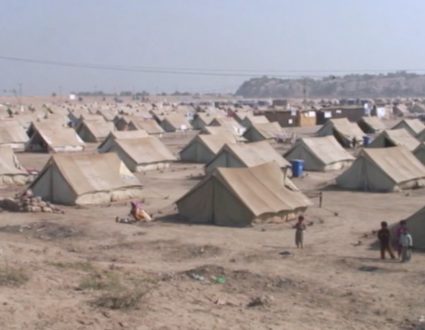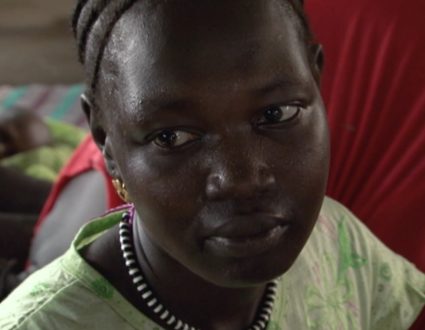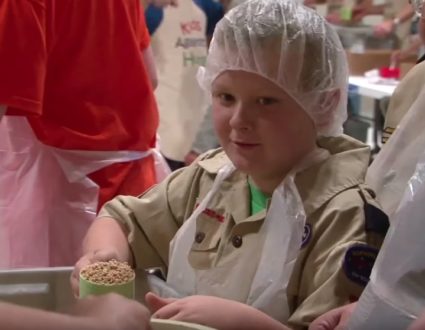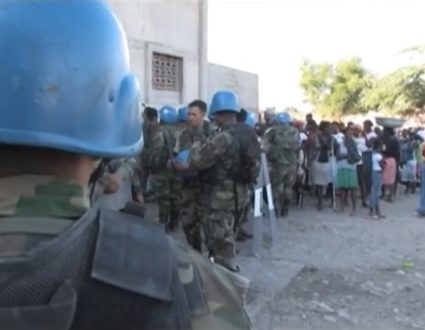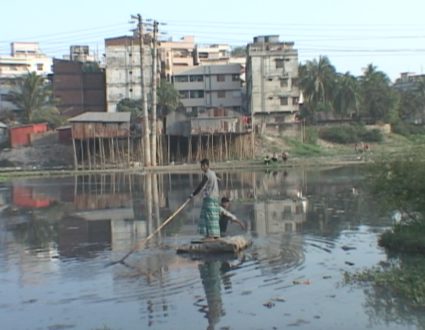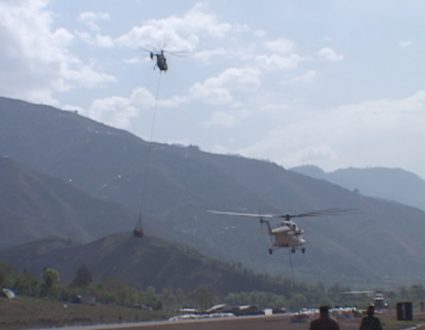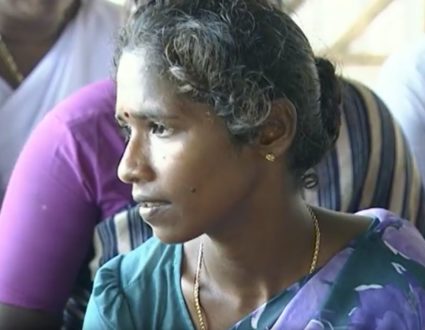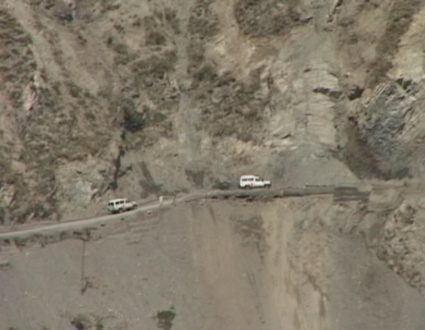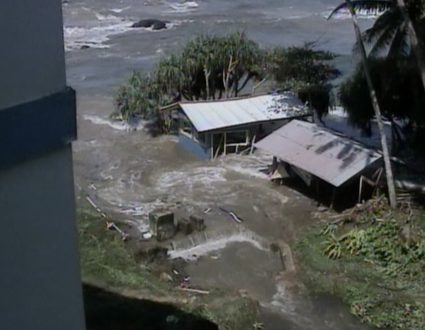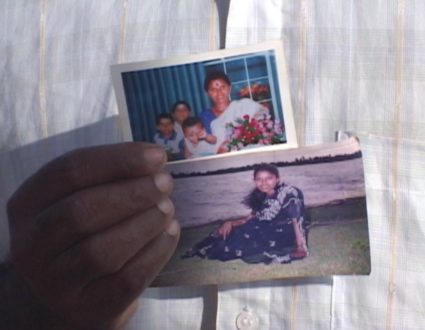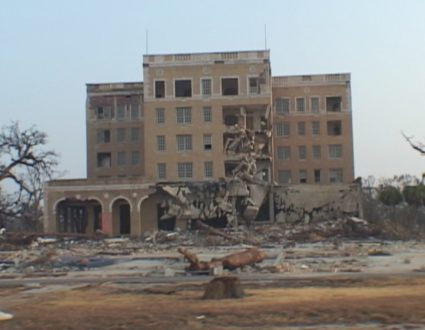FRED DE SAM LAZARO: It’s here at the Ethiopia-Somali border that some 400 refugees arrive every single day, most of them women and children, most of them fleeing not just famine, but fighting.
With normal escape routes to Kenya virtually closed by escalating conflict, the exodus of Somali civilians has moved west to Ethiopia. We ran into Adar Adan, who had walked for seven days to get to the Ethiopia line. She had first come a few weeks earlier, but went back to Somalia to fetch four of her six children. She hopes her husband with the two others will soon follow.
ADAR ADAN, Ethiopia (through translator): I just went back to sell our remaining animals. There’s nothing to eat. There’s a drought. A while back, there was fighting. Now there are government soldiers there, but there’s nothing to eat.
FRED DE SAM LAZARO: When did she last eat?
ADAR ADAN (through translator): We had some tea earlier today. Some lady gave it to us as charity.
FRED DE SAM LAZARO: She was heading first toward a reception center about a mile further in where the Ethiopian authorizes register newcomers.
With care packages, they’re moved to an increasingly cramped transition area. Until recently, the average stay here was about a week. But with regular camps at capacity, the wait has been getting much longer, says Dr. Benjamin Levy, a Michigan native who has been here for about eight weeks with the group Doctors Without Borders.
DR. BENJAMIN LEVY, Doctors Without Borders: There are currently 6,000 people that are waiting to be placed in a refugee camp. They have already crossed the border. They have already come for help. And they’re currently not receiving much more than rudimentary help.
They’re planning to open another camp. It is — that is at least a week, if not several weeks out.
FRED DE SAM LAZARO: So far, the number of Somali refugees who have landed here in Ethiopia is around 135,000, and it’s growing. We’re in a camp called Hilaweyn. It is the fourth camp that was built to accommodate them. And it’s filled to capacity.
Hilaweyn is 21 miles from the border. It looks on the outside like any dusty small town in rural Africa. Life goes on in the little shops that offer food items, tailoring and battery charging. Cell phones are abundant, but not electricity.
To get a keener sense of what people here have been through, Dr. Levy says, come to the camp’s makeshift hospital.
DR. BENJAMIN LEVY: Our mortality rate at one point was approaching 10 percent, which in a census of 60 to 80 children, means that we were losing approximately one child a day.
Tell her we will try giving her thicker milk today. And I would like to try to get her to see if she’s willing to drink it by mouth.
FRED DE SAM LAZARO: That rate has gone down a bit, but many of Levy’s patients struggle to hang on. This child is 3 years old. She weighs 14 pounds. From tube feeding, like she’s receiving, to the protein-rich Plumpy’nut paste given to those who can still eat, nurses and doctors try to rebuild the withered bodies of dozens of children each day.
DR. BENJAMIN LEVY: The malnutrition is the underlying problem, but the children that we bring to — within the hospital typically have very see severe diarrhea 10 to 20 times a day, very severe chest infections, pneumonia in both lungs.
FRED DE SAM LAZARO: And they keep coming. Twice as many refugees streamed across the border in October as they did in September. For them, this seems like a promised land.
Hassan Kulow survived a perilous 12-day donkey cart ride, including close encounters with the al-Qaida-linked terror group Al-Shabab.
HASSAN KULOW, Ethiopia (through translator): When we reached (INAUDIBLE) inside Somalia, there were some Al-Shabab fighters there. They started to fight with the government troops and they captured a lot of guns and ammunition and they slaughtered a lot of young people. Then, after that, nobody was allowed to bury them. In the end, people just threw their bodies in the river.
FRED DE SAM LAZARO: For now, Kulow, his wife and five children squeeze into a tiny tent. Yet it’s the first time in years that they have had adequate food and shelter in relatively peaceful surroundings.
He quickly took advantage of the medical care being offered. His 4-year-old daughter, Saado (ph), suffered a respiratory infection and got a prescription for an antibiotic. But Kulow and everyone else here wonder, what comes next?
HASSAN KULOW (through translator): A lot of problems forced us to come here. And now we are here. As for the long-term future, me and my children, we don’t know anything about education. We don’t read or write. We need to be educated. We need to be sent to South Africa or America to get some of these facilities, so that we can catch up with the rest of the world. But there’s no way we can go back to Somalia.
FRED DE SAM LAZARO: Resettlement to third countries could be years away. Canada, Britain, the U.S. and Scandinavian countries have taken in large numbers of Somali refugees in recent decades.
For now, the challenge for the U.N.’s World Food Program is to raise funds to sustain the camps here and in Northern Kenya. So far, assistance, including $650 million in cash and kind from the U.S. government, has stocked the warehouses with staples and critical supplements, like this high-calorie pre-mixed powder.
Girma Mandefro is with an aid group contracted by the U.N.
GIRMA MANDEFRO, relief worker: This is a (INAUDIBLE) for just one person.
FRED DE SAM LAZARO: And it’s a fortified food to just boost people’s nutrition.
GIRMA MANDEFRO: Exactly. Exactly.
FRED DE SAM LAZARO: Is it meant for children?
GIRMA MANDEFRO: This is meant for children, yes, children under 5.
FRED DE SAM LAZARO: There’s enough supply to last through 2012, and the World Food Program has begun seeking donations for later in the year. It’s a challenging task for a region that’s been chronically distressed and in need for years.
Program spokesman Jaakko Valli:
JAAKKO VALLI, World Food Program: I can understand where the concerns or the donor fatigues comes from. It’s — it’s challenging to show real needs of the Somali refugees because some of their displacement is induced by drought, and that doesn’t show in the news camera lens as appealing than the damage where an earthquake or even floods can show.
And Somalia and the Somalis fleeing to the neighboring countries have been an issue on news, on the media already for several decades.
FRED DE SAM LAZARO: For his part, Dr. Levy says things seem precariously under control in these camps, but he’s preparing for the worst.
The news that Kenyan forces have entered Somalia to fight against Al-Shabab militants has made the situation more complicated.
DR. BENJAMIN LEVY: My understanding is that the camps in Kenya have seen a decrease in the number of people that they are seeing, even as the fighting across the border increases.
We’re wondering, does that mean that the people who want — you know, need to come or want to come have come, or does that mean that people are so entrenched and terrified, that they are unable to leave at this moment, and as soon as the fighting lets up, there will be a new flood of people coming across the border? The situation is absolutely far from — far from resolved.
FRED DE SAM LAZARO: So, for both providers and refugees, planning is done on short horizons, with smaller victories, a smiling child, a relieved mother.
Civil war creates refugees
Kenyan troops have been drawn into the civil war in Somalia between the government and al-Shabab militants as desperate refugees flee to Ethiopia to escape violence and famine.

So far, the number of Somali refugees who have landed here in Ethiopia is around 135,000, and it’s growing.
Hilaweyn is the fourth camp that was built to accommodate the refugees. And it’s filled to capacity.








